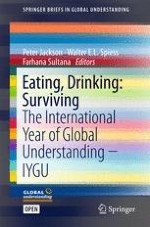
Open Access 2016 | OriginalPaper | Buchkapitel
The Nutrition Transition in Developing Asia: Dietary Change, Drivers and Health Impacts
verfasst von : Matthew Kelly
Erschienen in: Eating, Drinking: Surviving
Aktivieren Sie unsere intelligente Suche, um passende Fachinhalte oder Patente zu finden.
Wählen Sie Textabschnitte aus um mit Künstlicher Intelligenz passenden Patente zu finden. powered by
Markieren Sie Textabschnitte, um KI-gestützt weitere passende Inhalte zu finden. powered by